Application of a dorsal splint
1. General considerations
A dorsal splint with the hand in an intrinsic plus (Edinburgh) position may be applied to support a fixation during the first postoperative phase.
It may also be applied in the first week if there is swelling.
The dorsal splint is easy to apply and there is no need for hand therapy.
The dorsal splint allows immediate active mobilization (flexion) of the finger joints and may also help with pain and edema control. The arm should be actively elevated to help reduce the swelling.
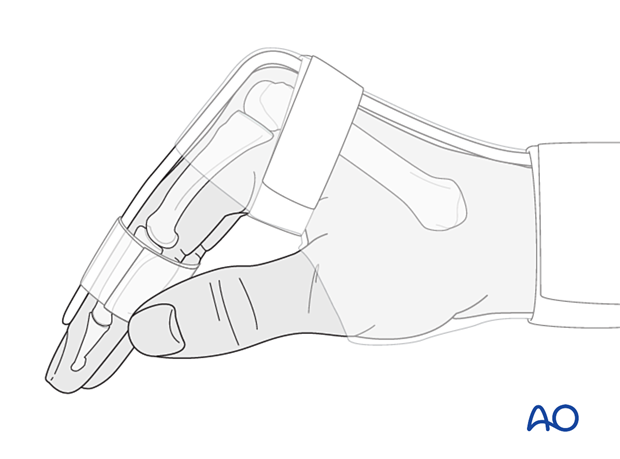
Hand position for splinting
The hand is splinted in an intrinsic plus (Edinburgh) position:
- Neutral wrist position or up to 15° extension
- Metacarpophalangeal (MCP) joint in 90° flexion
- Proximal interphalangeal (PIP) joint in extension
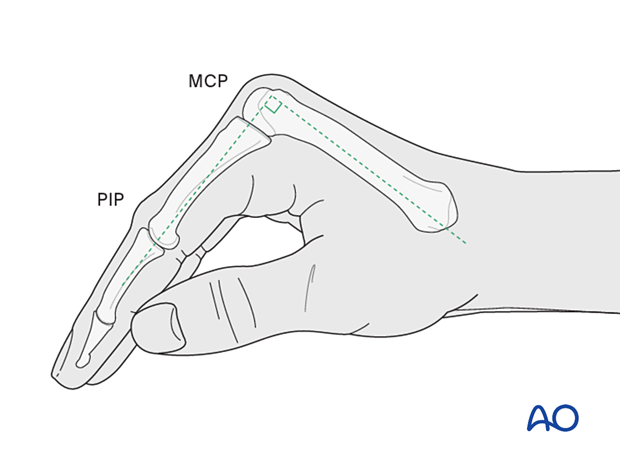
The reason for splinting the MCP joint in flexion is to maintain its collateral ligament at maximal length, avoiding scar contraction.
PIP joint extension in this position also maintains the length of the volar plate.
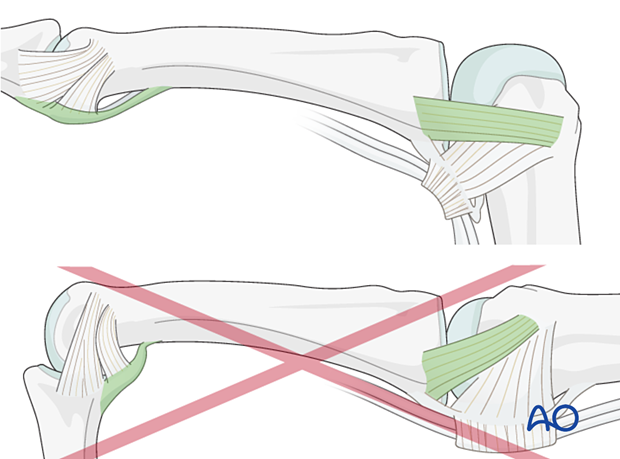
AO teaching video
Phalanx–Proximal Fractures–Extension Block Splint (Burke Halter)
2. Splint application
Protect the skin of the arm and hand with padding/cotton sleeve to avoid pressure sores, especially on the distal ulna and styloid process of the radius.
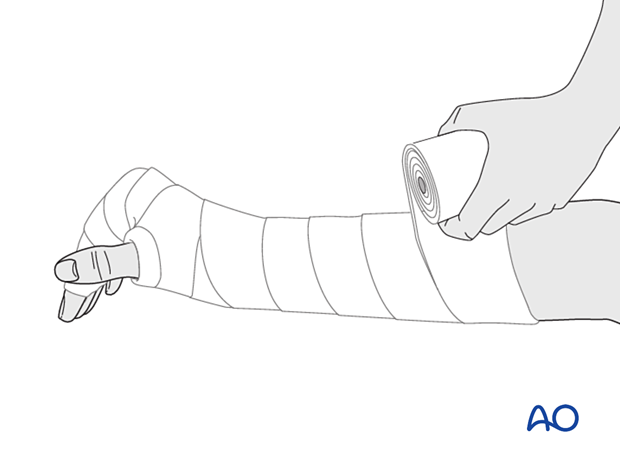
In compliant patients, only the affected and the directly neighboring fingers may be included in the splint.
Create a splint of at least 6 slabs of cast bandage. It should cover the dorsal or palmar half of the forearm, wrist, and hand.
The wrist should be in neutral or up to 15° extension.
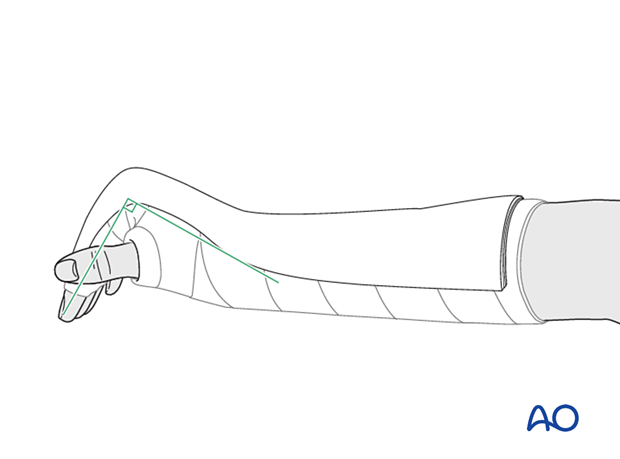
The splint is held in place with an elastic bandage. The bandage should not be overtightened at the level of the wrist joint to avoid excessive swelling of the hand.
Direct skin contact with adjacent fingers should be prevented by placing gauze pads between them.













